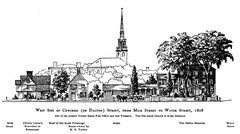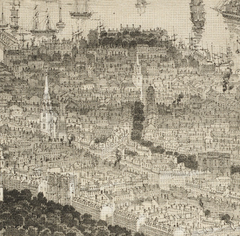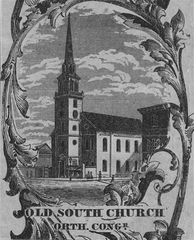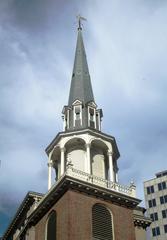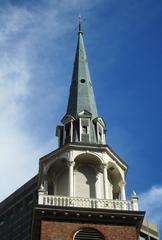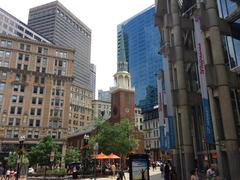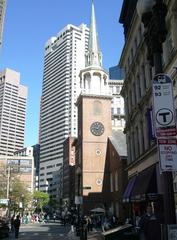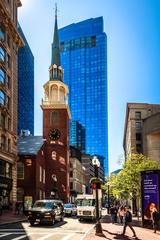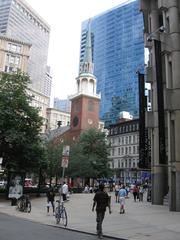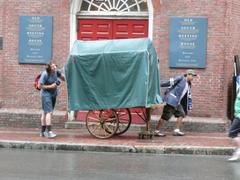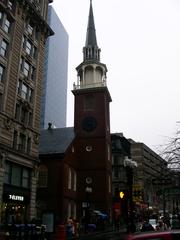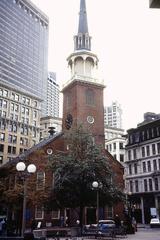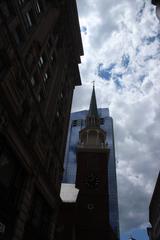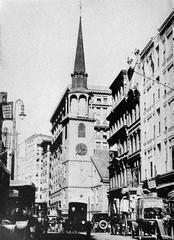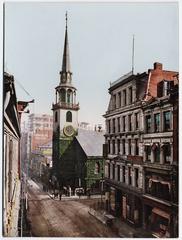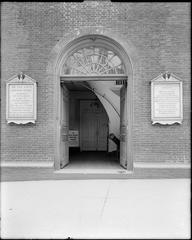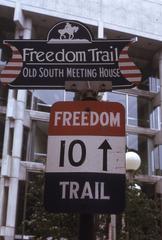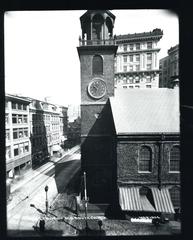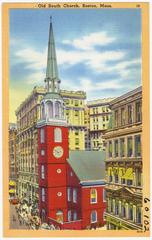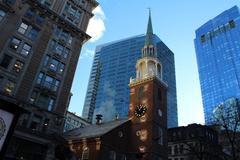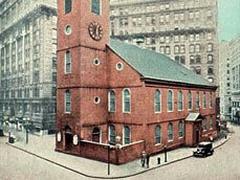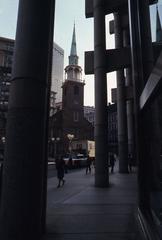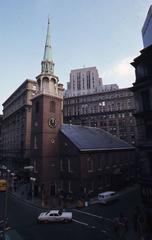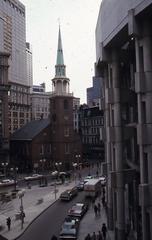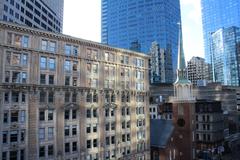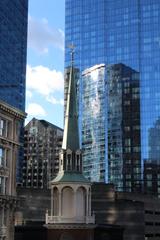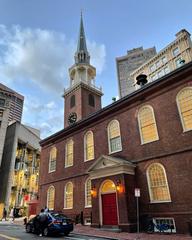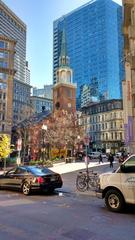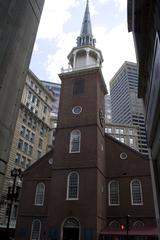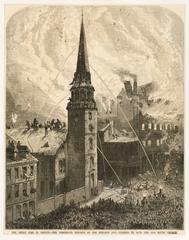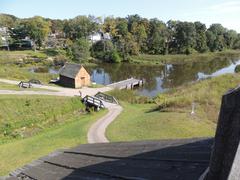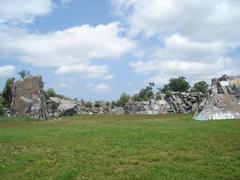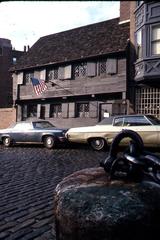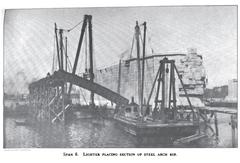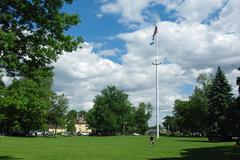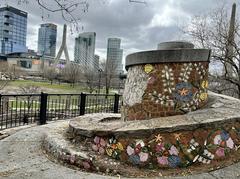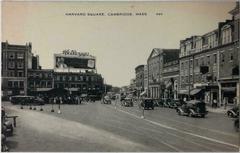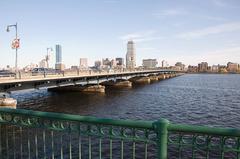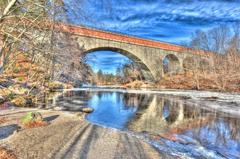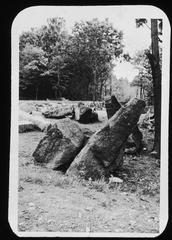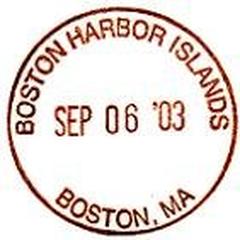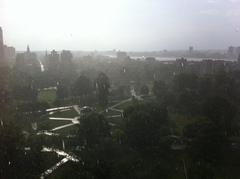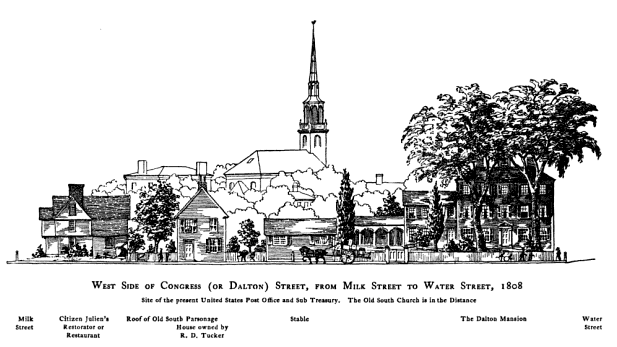
Comprehensive Travel Guide to Boston Historical Sites
Date: 19/07/2024
Introduction to Boston’s Historical Sites
Boston, Massachusetts, is a city that seamlessly blends historical significance with modern vibrancy. Known as the ‘Cradle of Liberty,’ it played a pivotal role in America’s journey toward independence. Founded in 1630 by Puritan settlers, Boston has grown from a small colonial town into a bustling metropolis that attracts millions of visitors each year. This comprehensive travel guide will navigate you through Boston’s rich history, cultural landmarks, and vibrant neighborhoods, making sure you don’t miss any of its iconic attractions. Whether you’re walking the historic Freedom Trail, exploring world-class museums like the Museum of Fine Arts, or savoring Italian delicacies in the North End, Boston offers a diverse array of experiences for every traveler. From the early Puritan roots and revolutionary fervor to its current status as an educational and technological hub, Boston’s unique blend of past and present makes it a must-visit destination. (Faneuil Hall, Freedom Trail, Museum of Fine Arts)
Table of Contents
- Introduction
- Exploring Boston’s Historical Sites - A City Forged in Revolution
- Early Settlement and Puritan Roots (1630-1700)
- A Thriving Port and Growing Tensions (1700-1775)
- The Cradle of the American Revolution (1770-1783)
- Expansion, Innovation, and Abolition (1800-1865)
- Immigration, Industrial Growth, and Urban Renewal (1865-1950)
- A Modern Metropolis with a Rich Past (1950-Present)
- Visitor Information
- Travel Tips
- Guided Tours and Photographic Spots
- FAQ
- Discover Boston’s Top Attractions - Historical Sites, Museums, and Vibrant Neighborhoods
- Boston Travel Tips and Nearby Attractions
- FAQ
- Ultimate Guide to Boston’s Cultural Sites and Visitor Tips
- Conclusion
Exploring Boston’s Historical Sites - A City Forged in Revolution
Boston, a city steeped in history and culture, offers a unique glimpse into America’s revolutionary past. From iconic landmarks to hidden gems, this guide will help you explore the best historical sites Boston has to offer.
Early Settlement and Puritan Roots (1630-1700)
The story of Boston begins in 1630 with the arrival of Puritan colonists led by John Winthrop. Seeking religious freedom, they established the Massachusetts Bay Colony, with Boston as its capital. The Puritans’ strict religious beliefs shaped the early city’s character, emphasizing education, hard work, and a strong sense of community.
This period saw the establishment of institutions that would later become cornerstones of American society. Boston Latin School, founded in 1635, became the first public school in the colonies, reflecting the Puritans’ commitment to education. Similarly, Harvard University, established in 1636 across the Charles River in Cambridge, solidified the region’s dedication to intellectual pursuits.
A Thriving Port and Growing Tensions (1700-1775)
Over the next century, Boston flourished as a major port city. Its strategic location along the Atlantic coast made it a hub for trade, connecting the colonies with Europe and the Caribbean. The city’s wealth grew, fueled by industries like shipbuilding, fishing, and rum production.
However, this period also saw growing tensions with British rule. The colonists chafed under increasingly restrictive trade regulations and taxes imposed by the British Parliament. Boston became a hotbed of resistance, with prominent figures like Samuel Adams and James Otis Jr. leading the charge against what they perceived as unjust laws.
The Cradle of the American Revolution (1770-1783)
The simmering discontent in Boston finally erupted in 1770 with the Boston Massacre. British soldiers, sent to quell unrest, fired on a crowd of unarmed colonists, killing five. This event, immortalized by Paul Revere’s engraving, further inflamed anti-British sentiment and became a rallying cry for the burgeoning revolution.
Three years later, the Boston Tea Party solidified the city’s place in history. In defiance of the Tea Act, which granted the East India Company a monopoly on tea sales, colonists disguised as Native Americans boarded British ships and dumped 342 chests of tea into the harbor. This act of defiance, a powerful symbol of colonial resistance, pushed the colonies closer to war.
The American Revolution officially began in 1775 with the Battles of Lexington and Concord, just outside Boston. The city itself became a battleground during the Siege of Boston, which lasted nearly a year. The British, under siege by colonial forces, eventually evacuated in 1776, marking a turning point in the war.
Expansion, Innovation, and Abolition (1800-1865)
Following the Revolution, Boston continued to grow and prosper. The 19th century saw significant expansion, both geographically and culturally. The filling in of the Back Bay, a massive engineering feat, created new land and transformed the city’s landscape.
This era also witnessed a surge in intellectual and literary activity. Boston became a center of the Transcendentalist movement, with prominent figures like Ralph Waldo Emerson and Henry David Thoreau challenging conventional thinking and advocating for self-reliance and individualism.
Furthermore, Boston played a crucial role in the abolitionist movement. Prominent abolitionists like William Lloyd Garrison and Frederick Douglass used the city as a platform to denounce slavery and advocate for its abolition. The city became a haven for escaped slaves on the Underground Railroad, offering them refuge and support on their journey to freedom.
Immigration, Industrial Growth, and Urban Renewal (1865-1950)
The late 19th and early 20th centuries saw waves of immigrants arriving in Boston, primarily from Ireland, Italy, and Eastern Europe. These newcomers brought their own cultures and traditions, enriching the city’s social fabric while also facing challenges of poverty and discrimination.
This period also witnessed significant industrial growth, with industries like textiles, manufacturing, and finance flourishing in Boston. However, this growth came at a cost, leading to overcrowding, pollution, and social unrest.
In response to these challenges, Boston underwent significant urban renewal efforts in the mid-20th century. The construction of highways and public housing projects aimed to address issues of congestion and housing shortages. However, these projects also displaced communities and altered the city’s fabric, sparking debates about urban planning and social equity.
A Modern Metropolis with a Rich Past (1950-Present)
Today, Boston stands as a vibrant metropolis, a center for education, technology, and innovation. The city has undergone a remarkable transformation in recent decades, with a revitalized waterfront, thriving arts and culture scene, and a booming economy.
Despite its modern advancements, Boston remains deeply connected to its past. Historic landmarks like Faneuil Hall, the Old North Church, and the Freedom Trail serve as tangible reminders of the city’s pivotal role in American history. These sites, carefully preserved and celebrated, offer visitors a glimpse into the events and individuals that shaped not only Boston but the nation as a whole.
Visitor Information
When planning your visit to Boston’s historical sites, consider the following details:
- Faneuil Hall: Open daily from 9 AM to 5 PM. Admission is free.
- Old North Church: Open from 9 AM to 6 PM. Tickets are $8 for adults and $4 for children.
- Freedom Trail: Open year-round. Guided tours are available with tickets ranging from $14 to $20.
Travel Tips
- Best Time to Visit: Spring and fall offer pleasant weather and fewer crowds.
- Nearby Attractions: Explore the Boston Common, the Public Garden, and the New England Aquarium.
- Special Events: Check out the Boston Marathon in April and Harborfest in July.
Guided Tours and Photographic Spots
- Guided Tours: Join a guided tour of the Freedom Trail to gain deeper insights into Boston’s history. Tours are available from various providers, including the Freedom Trail Foundation.
- Photographic Spots: Capture the essence of Boston at iconic spots like the Paul Revere House, Bunker Hill Monument, and the Boston Public Library.
FAQ
- What are the must-see historical sites in Boston? The must-see sites include Faneuil Hall, the Old North Church, and the Freedom Trail.
- Are there guided tours available for Boston’s historical landmarks? Yes, guided tours are available for many historical landmarks, including the Freedom Trail.
Visit and Stay Up to Date
For more information on Boston’s historical sites, download our mobile app, check out other related posts, or follow us on social media for updates and travel tips.
Discover Boston’s Top Attractions - Historical Sites, Museums, and Vibrant Neighborhoods
Boston, a city steeped in history and brimming with modern charm, offers a diverse array of attractions for every kind of traveler. From its revolutionary roots to its world-class museums and vibrant neighborhoods, Boston promises an unforgettable experience. Here are some of the top attractions that should be on every visitor’s itinerary:
Walking Through History
-
Freedom Trail: This 2.5-mile-long, brick-lined route guides visitors past 16 historically significant sites, including Boston Common, Paul Revere’s House, Old North Church, and the Boston Massacre site. Walking the Freedom Trail is like stepping back in time and witnessing the birth of a nation. (Freedom Trail)
- Visitor Info: Open daily from dawn to dusk. Free to walk; guided tours available for a fee.
-
Boston Tea Party Ships & Museum: Relive the pivotal event that ignited the American Revolution at this interactive museum. Board replica ships, engage with costumed interpreters, and experience the events of December 16, 1773, firsthand. (Boston Tea Party Ships & Museum)
- Visitor Info: Open 10 AM - 5 PM daily. Tickets: Adults $29.95, Children $21.95.
-
Faneuil Hall Marketplace: Known as the “Cradle of Liberty,” Faneuil Hall has served as a marketplace and meeting hall since 1742. Today, it’s a bustling hub with shops, restaurants, and street performers, offering a taste of Boston’s vibrant atmosphere. (Faneuil Hall Marketplace)
- Visitor Info: Open daily. Hours vary by shop and restaurant.
-
Boston Common and Public Garden: America’s oldest park, Boston Common, offers a tranquil escape in the heart of the city. Take a stroll, enjoy a picnic, or go for a swan boat ride on the adjacent Public Garden, a Victorian-era oasis known for its picturesque lagoon. (Boston Common)
- Visitor Info: Open daily from dawn to dusk. Swan boats operate seasonally.
Immersing in Art and Culture
-
Museum of Fine Arts, Boston (MFA): Home to a world-renowned collection spanning from ancient Egyptian artifacts to contemporary art, the MFA offers a captivating journey through art history. Don’t miss the American Wing, showcasing masterpieces by renowned American artists. (Museum of Fine Arts)
- Visitor Info: Open Wed-Sun 10 AM - 5 PM. Tickets: Adults $25, Children (7-17) $10.
-
Isabella Stewart Gardner Museum: Housed in a stunning 15th-century Venetian-style palace, this museum showcases the eclectic collection of art collector Isabella Stewart Gardner. Explore paintings, sculptures, tapestries, and furniture from around the world, displayed in a unique and intimate setting. (Isabella Stewart Gardner Museum)
- Visitor Info: Open Wed-Mon 11 AM - 5 PM. Tickets: Adults $20, Children (under 18) free.
-
Boston Symphony Orchestra (BSO): Experience the magic of live classical music at Symphony Hall, home to the acclaimed Boston Symphony Orchestra. From September to May, the BSO presents a diverse program of concerts, featuring renowned conductors and soloists. (Boston Symphony Orchestra)
- Visitor Info: Concert times and ticket prices vary. Check the website for details.
-
Institute of Contemporary Art (ICA): Located on Boston’s waterfront, the ICA showcases cutting-edge contemporary art in a striking architectural setting. Explore thought-provoking exhibitions, installations, and performances that push the boundaries of artistic expression. (Institute of Contemporary Art)
- Visitor Info: Open Tues-Sun 10 AM - 5 PM. Tickets: Adults $15, Children (under 18) free.
Exploring Boston’s Neighborhoods
-
Beacon Hill: Wander through the charming, gaslit streets of Beacon Hill, known for its Federal-style brick row houses, antique shops, and cozy cafes. Don’t miss Acorn Street, considered one of the most photographed streets in America.
- Travel Tip: Visit during the fall for beautiful foliage and fewer crowds.
-
North End: Boston’s Little Italy, the North End, is a culinary paradise. Indulge in authentic Italian cuisine, explore historic churches, and soak up the lively atmosphere of this vibrant neighborhood.
- Travel Tip: Try the cannoli at Mike’s Pastry or Modern Pastry.
-
Back Bay: Home to elegant brownstones, designer boutiques, and the iconic Trinity Church, Back Bay offers a taste of Boston’s sophisticated side. Stroll down Newbury Street, a shopper’s paradise, or relax by the Charles River Esplanade.
- Travel Tip: Visit the Skywalk Observatory for panoramic views of the city.
-
Fenway-Kenmore: Experience the electric atmosphere of Fenway Park, home to the Boston Red Sox, one of baseball’s most beloved teams. Explore the lively neighborhood surrounding the park, with its sports bars, restaurants, and music venues.
- Visitor Info: Check the Red Sox schedule for game times and ticket prices. (Red Sox)
Beyond the City Center
-
Harvard University: Take a short trip across the Charles River to Cambridge and visit Harvard University, the oldest institution of higher learning in the United States. Explore the historic campus, admire the architecture, and soak up the academic atmosphere. (Harvard University)
- Visitor Info: Free campus tours available. Check the website for times.
-
Massachusetts Institute of Technology (MIT): Another renowned Cambridge institution, MIT, offers a glimpse into the world of cutting-edge science and technology. Explore the campus, visit the MIT Museum, or attend a public lecture. (MIT)
- Visitor Info: MIT Museum open daily 10 AM - 5 PM. Tickets: Adults $10, Children $5.
-
Boston Harbor Islands National and State Park: Escape the city bustle and explore the natural beauty of the Boston Harbor Islands. Take a ferry to one of the 34 islands and enjoy hiking, picnicking, swimming, or simply soaking up the stunning harbor views. (Boston Harbor Islands)
- Visitor Info: Ferries operate seasonally. Check the website for schedules and ticket prices.
Boston Travel Tips and Nearby Attractions
Travel Tips:
- Best Time to Visit: Spring and fall for mild weather and fewer crowds.
- Public Transportation: The “T” is Boston’s subway system and a convenient way to get around.
- Photography Spots: Don’t miss the scenic views from the Charles River Esplanade and the Boston Public Garden.
Nearby Attractions:
- Salem: Famous for its 1692 witch trials, Salem offers historic sites, museums, and a charming downtown area.
- Lexington and Concord: Visit the birthplace of the American Revolutionary War with historic battlefields and colonial-era homes.
These are just a few of the many attractions that make Boston a captivating destination. With its rich history, vibrant culture, and welcoming atmosphere, Boston promises an unforgettable experience for every visitor. For more travel tips and updates, follow us on social media or download our mobile app, Audiala.
FAQs
- What are the best times to visit Boston’s Freedom Trail? The Freedom Trail can be visited year-round, but spring and fall offer the best weather and fewer crowds.
- Are guided tours available at the Boston Tea Party Ships & Museum? Yes, guided tours are available and highly recommended to fully experience the interactive exhibits.
- How do I get tickets for a Boston Symphony Orchestra concert? Tickets can be purchased online through the BSO website or at the Symphony Hall box office.
- What public transportation options are available in Boston? Boston’s subway system, known as the “T,” is a convenient way to get around the city.
Ultimate Guide to Boston’s Cultural Sites and Visitor Tips
Introduction to Boston
Boston, Massachusetts, pulsates with a vibrant energy woven from centuries of American history, revolutionary spirit, and intellectual prowess. Known as the ‘Cradle of Liberty,’ Boston played a pivotal role in the American Revolution and continues to be a beacon of freedom and progressive thought. This guide will help you explore Boston’s historical sites, understand ticket prices, visiting hours, and provide practical travel tips for an unforgettable journey.
Must-See Cultural Attractions
-
Freedom Trail: This 2.5-mile red brick path guides visitors past 16 historically significant sites, including Boston Common, Paul Revere’s House, and the Old North Church. Walking the Freedom Trail is like stepping back in time, offering a tangible connection to the city’s revolutionary past. Make sure to check the Freedom Trail’s official website for ticket prices and guided tour options.
-
Faneuil Hall Marketplace: A bustling hub since 1742, Faneuil Hall and Quincy Market offer a blend of history, shopping, and dining. Listen to street performers, browse unique crafts, and savor local delicacies like clam chowder. Visit the Faneuil Hall Marketplace website for opening hours and special events.
-
Museum of Fine Arts,Boston (MFA): Home to nearly 500,000 works of art, the MFA boasts an impressive collection spanning ancient Egyptian artifacts to contemporary masterpieces. Don’t miss the renowned American Wing and the serene Japanese Garden. Check the MFA website for visiting hours and ticket information.
-
Isabella Stewart Gardner Museum: This unique museum, housed in a Venetian-style palace, showcases the eclectic art collection of Isabella Stewart Gardner. Explore paintings, sculptures, tapestries, and wander through the tranquil courtyard. Visit the Gardner Museum website for ticket prices and visiting hours.
-
Boston Symphony Orchestra (BSO) at Symphony Hall: Experience world-class classical music in the acoustically stunning Symphony Hall. From September to May, the BSO captivates audiences with its exceptional performances. Check the BSO website for concert schedules and ticket prices.
Beyond the Tourist Trail - Exploring Local Culture
-
Catch a Red Sox Game at Fenway Park: Immerse yourself in Boston’s passionate baseball culture at Fenway Park, America’s oldest Major League ballpark. Even if you’re not a die-hard fan, the electric atmosphere is an experience in itself. For game schedules and ticket prices, visit the Red Sox website.
-
Explore the Neighborhoods: Venture beyond downtown to discover the unique character of Boston’s diverse neighborhoods. Stroll through the cobblestone streets of Beacon Hill, savor Italian delicacies in the North End, or browse independent boutiques in Back Bay.
-
Attend a Performance at the Boston Ballet or Huntington Theatre Company: Boston boasts a thriving performing arts scene. Experience the grace of the Boston Ballet or enjoy a thought-provoking play at the Huntington Theatre Company. Check their respective websites for show schedules and ticket information.
-
Visit the Boston Public Library: Established in 1848, the Boston Public Library is an architectural gem and a testament to the city’s commitment to learning. Take a free tour, admire the murals, and soak up the scholarly ambiance. Visit the Boston Public Library website for visiting hours and tour details.
Tips for Your Boston Adventure
-
Plan Your Visit Around the Weather: Boston experiences four distinct seasons. Spring and fall offer pleasant temperatures ideal for exploring outdoors, while summer can be hot and humid. Winter brings snow and chilly temperatures, but also festive holiday decorations.
-
Utilize Public Transportation: Boston’s public transportation system, the ‘T,’ is efficient and affordable, connecting you to major attractions and neighborhoods. Consider purchasing a CharlieCard for cost-effective travel. Visit the MBTA website for more information.
-
Walk Whenever Possible: Boston is a very walkable city, and exploring on foot allows you to soak up the charm of its historic streets and hidden alleyways.
-
Make Reservations in Advance: Boston is a popular tourist destination, so it’s advisable to book accommodations, tours, and popular restaurants in advance, especially during peak season.
-
Embrace the Local Accent: Bostonians have a distinctive accent, often dropping their ‘r’s’ and adding an ‘ah’ sound to words. Embrace the local dialect and don’t be afraid to ask for clarification if needed.
-
Try the Local Cuisine: Indulge in Boston’s culinary delights, from fresh seafood like clam chowder and lobster rolls to the iconic Boston cream pie. Don’t forget to try a ‘frappe,’ the local term for a milkshake.
-
Pack for All Weather: Boston’s weather can be unpredictable, so pack layers of clothing to adapt to changing conditions. Comfortable walking shoes are essential for exploring the city’s cobblestone streets.
-
Be Prepared for Crowds: Boston is a bustling city, especially during peak tourist season. Be prepared for crowds at popular attractions and plan your itinerary accordingly.
-
Engage with the Locals: Bostonians are generally friendly and proud of their city. Don’t hesitate to ask locals for recommendations or strike up a conversation to gain insider perspectives.
FAQ
-
What are the visiting hours for the Museum of Fine Arts, Boston? Visiting hours are typically from 10 AM to 5 PM, but check the MFA website for the most current information.
-
How much do tickets for the Freedom Trail cost? Walking the Freedom Trail is free, but certain sites along the trail may charge admission fees. Visit the Freedom Trail’s official website for detailed ticket information.
-
When is the best time to visit Boston? The best times to visit are during the spring (April to June) and fall (September to November) when the weather is mild and the city is less crowded.
Call to Action
By embracing the city’s rich history, vibrant culture, and practical tips, your visit to Boston is sure to be an unforgettable experience. For more travel tips and guides, download our mobile app Audiala or follow us on social media for the latest updates.
Conclusion and Summary of Key Points
Boston stands as a testament to America’s enduring spirit and progressive ideals. From its role in the American Revolution to its current status as a center for education and innovation, the city offers a rich tapestry of history and modernity. Visiting Boston provides an unparalleled opportunity to walk in the footsteps of revolutionaries, explore world-class art, and immerse yourself in diverse cultural experiences. Whether you’re wandering through the historic streets of Beacon Hill, catching a Red Sox game at Fenway Park, or taking in panoramic views from the Skywalk Observatory, Boston promises an unforgettable journey. With its well-preserved historical sites, vibrant neighborhoods, and welcoming atmosphere, Boston is more than just a travel destination—it’s an experience that resonates with the past while looking toward the future. For more travel tips and updates, consider downloading our mobile app Audiala or following us on social media. (Boston Symphony Orchestra, Isabella Stewart Gardner Museum, Red Sox)
